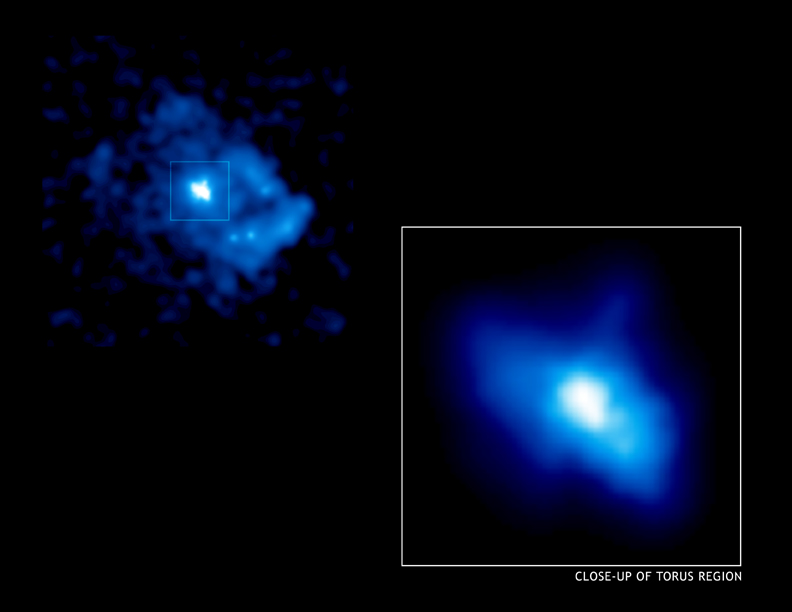
 Credit: NASA/CXC/SAO
Credit: NASA/CXC/SAO
A Crab Too Far
New high resolution images of the X-ray emission from stellar explosions are helping to re-write the astronomy texts about these events, and the objects they leave behind. The image above is a case in point - a high resolution observation (by the Chandra X-ray Observatory's High Resolution Camera) of a supernova remnant called SNR 0540-69.3. This supernova occurred in the Large Magellanic Cloud, a neighbor to the Milky Way. By allowing astronomers to study the spatial distribution of the high energy emission from supernova beyond our own Galaxy, Chandra allows astronomers access to a greater number of these events, and allows astronomers to compare and contrast these events in different environments. The image on the upper left shows the entire field of the remnant, showing the extensive outer blast wave produced as the exploded outer parts of a star smack into the surrounding material. The inset on the lower right shows a close up of the central region, consisting of a doughnut-shaped torus with jets of high energy particles produced by the neutron star at the center of the torus. These features have also been seen in the Crab Nebula, the Milky Way's famous exploded star.
Last Week *
HEA Dictionary * Archive
* Search HEAPOW
* Education
Each week the HEASARC
brings you new, exciting and beautiful images from X-ray and Gamma ray
astronomy. Check back each week and be sure to check out the HEAPOW archive!
Page Author: Dr. Michael F. Corcoran
Last modified Monday, 26-Feb-2024 17:47:07 EST


